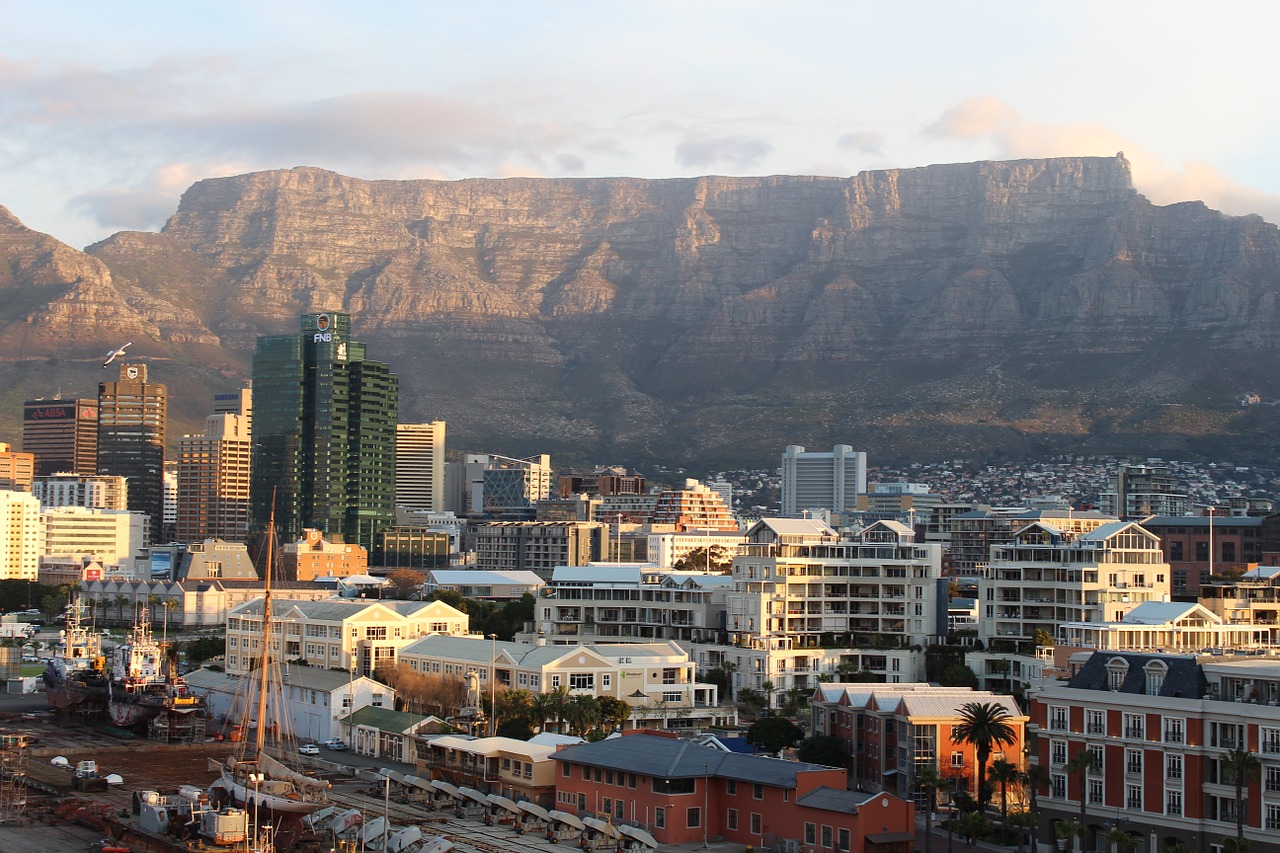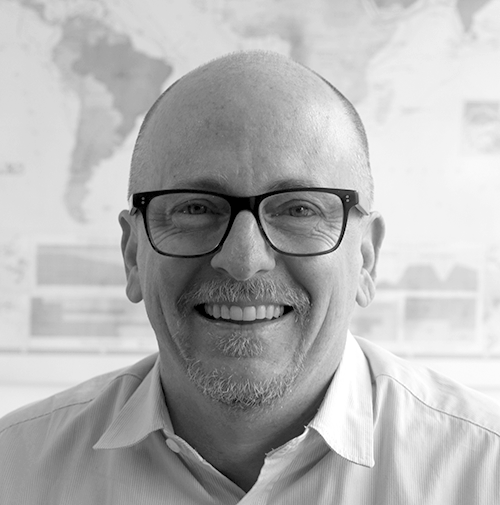About a year ago I spoke with Senior Analyst Patrick Christian about the local exchange of content in Africa. He gave me a crash course in capacity—how content providers in Africa generally host their content abroad because the cost to do so has always been much lower.
We talked caching, local exchange, and traffic.
With Patrick prepping for a presentation at the 2017 African Peering and Interconnection Forum, it was the perfect opportunity to check in. I got lots of updates about the state of local content, as well as the scoop on the big new story in Sub-Saharan Africa: the coming of the cloud.
You can listen to our conversation here or read the whole thing below.
Jayne Miller: Hi Patrick! We’re very excited to talk to you today about internet bandwidth in Africa. To dive in, I know you’re doing this upcoming presentation. I thought we could just start very broadly with a little preview of the big topics you’ll be covering.
Patrick Christian: Well, I’ll be going to AfPIF, the African Peering and Interconnection Forum. It’s organized by the African bureau of the Internet Society, so they’re looking at Africa, capacity, and traffic.
What I’ll be bringing to the conference is a presentation covering the growth of submarine bandwidth in Africa, the growth of internet bandwidth, as well. A subset of capacity. And transit/transport pricing. And, of course, the big news—the coming of the cloud to Africa.
And we’ll be talking a little bit more about the localization of traffic in Africa, which is kind of the mission of the Internet Society.
Africa is actually the fastest growing region of the world. They’re growing at somewhere above 40-45 percent.
JM: So a little bit of everything. Maybe we could start with the state of international bandwidth in Africa. As you mentioned it’s on the agenda this year and has been in previous years. What does Africa’s capacity and traffic look like today, in 2017?
PC: Right. In terms of international internet capacity, Africa is actually the fastest growing region of the world. So they’re growing at somewhere above 40-45 percent, whereas some of the more mature markets like in Europe and the United States, you’re seeing about 25 percent growth in international internet bandwidth.
As of mid-year 2017 they’re almost at 6 terabits of international internet capacity. But what we do is we look at two different regions. We look at the North and Sub-Saharan Africa because they’re not the same.
In the north, historically, they’ve had more access to international capacity because those countries sit along the Mediterranean and there have been many submarine cables that have existed—and long before the submarine cables that went around Africa—and it’s just the proximity. They’re much closer to Europe so it’s easier to connect with international capacity.
As of mid-year 2017 [Africa is] almost at 6 terabits of international internet capacity. But what we do is we look at two different regions. We look at the north and Sub-Saharan Africa because they’re not the same.
Historically they’ve always had a lot more international capacity than Sub-Saharan. But in the last couple years it’s been changing. What we’re seeing now with the numerous submarine cables that have gone in over the last five to 10 years—around Africa, around South Africa, and east and west sides—is that the capacity now in Sub-Saharan Africa is greater than in North Africa. It’s kind of a big change.
And in AfPIF, even though we’re covering all of Africa, we do seem to talk a little bit more about Sub-Saharan Africa. So that will be a focus of the presentation.
JM: Sidebar question. You make a very good point that Africa is one very big continent. And it can probably be very challenging to talk about such a big place as one thing. Is that something you encounter?
I guess the more eloquent version of this question is: is it difficult to talk about a place like Africa and distill trends?
PC: Exactly. It’s the big joke that I hear. “The country Africa.” Like it’s one big homogeneous country, which is crazy. Because of course if you look at anything—the traffic, capacity, etc.—each market is different. And in Sub-Saharan Africa we could easily separate it into East and West Africa. It's developed very differently in terms of international capacity. And South Africa is completely different, as well.
And there are three big hubs in Africa for capacity and traffic: South Africa, Kenya, and Nigeria. So, a little bit different.
And you could also talk about the interior countries versus the coastal countries. Because coastal countries have access to submarine bandwidth, so they have the most international capacity. Whereas in the interior, the terrestrial networks are less developed and there are less cross-border networks. So very low capacity; you’re talking about completely different things.
JM: And maybe that will change as the continent develops. Like you said, it’s growing faster than any other region. So maybe the way we talk about it will change.
PC: Exactly. And it’s growing faster, too, because it started from a smaller base. But we do see a lot of moving in Africa right now.
JM: I know from speaking to you earlier that Europe remains Africa’s top internet destination. Is that something, while we’re on the subject of change, that might also be evolving?
PC: Yes. And Europe is always a big part of the equation. Historically and up to now, Europe is where the content is. And where websites are hosted and where a lot of content is hosted, etc.
At the moment, as of mid-year 2017, Europe still accounted for 81 percent of international internet bandwidth in Africa. That’s a huge amount. We’re seeing changes, of course. Five years ago 9 percent of traffic was intra-African and its slowly ticking up. This year it’s 15 percent of traffic in Africa.
At the moment, as of mid-year 2017, Europe still accounted for 81 percent of international internet bandwidth in Africa. That’s a huge amount. We’re seeing changes, of course. Five years ago 9 percent of traffic was intra-African and its slowly ticking up. This year it’s 15 percent of traffic in Africa.
JM: To switch gears on you a little bit and go back to something you mentioned up front, we had also talked about Microsoft bringing two new data centers to South Africa. What does this mean?
PC: It’s big news. Especially if we’re looking to bring more content to the region. Just like I said most of the content is hosted in Europe, which leads to a variety of problems. Latency is the largest problem.
For example, watching a video, if the content is coming from Europe there’s going to be a lot of latency. A video doesn’t work well if there’s 100, 200 milliseconds of latency. So people don’t use the internet to watch these videos.
Even before data centers—content providers, content distribution networks like Akamai and Google have been installing caches and regional ISPs and internet exchange points to share with ISPs in the region.
Once people start watching it, the internet works. They start watching it more and more. That increases demand, traffic, etc. So if we could move this content more within Africa, you’ll get people to use it more and you’ll have a lot more intra-African capacity and traffic.
What this means is that the video didn’t have to come directly from Europe. It could come from a local cache. So it increased the performance. So 10-20 milliseconds instead of 100-200 makes a big difference. So the video works well, so people watch it.
Once people start watching it, the internet works. They start watching it more and more. That increases demand, traffic, etc. So if we could move this content more within Africa, you’ll get people to use it more and you’ll have a lot more intra-African capacity and traffic.
So for the data centers, the data centers are basically where the content is stored. There you go. This is great.
It’s just Microsoft for now, but a couple of things: Very few content providers have a lot of content. We’ve seen in various studies that a large portion of traffic in the region are from Google and Facebook. I mean a large proportion—like 30-40 percent. So you only need a few of these big content providers.
What we’ve seen in other regions like in Australia, some parts of Asia, and Brazil is that once you see one hyperscaled cloud provider come in, the others usually follow. So I wouldn’t be surprised if in the next year or so we’ll see the other Googles— Amazon, maybe IBM, moving into the area. And Facebook, as well.
JM: Maybe a year from now that will be a question I have for you. “So Patrick now that IBM is here…”
PC: Right. What we’ll see with the data centers as well is a change of networks within Africa. Because instead of the networks linking back up to Europe, we’ll start to see networks focusing more on, for example, connecting with South Africa to access the data centers. We’ve seen this around Australia as well.
Once the data centers went in, we’d see the international capacity slowing in growth.
We’ll see the regional players will have a larger connection to Australia instead of going to the U.S. for data or for content. We saw this in Asia, as well. Once you get the bigger hubs in Tokyo or Singapore or Hong Kong you start to see traditionally, like Africa to Europe, Asia would go to the United States for content. So you’ll start to see capacity growth slow for the trans-Pacific, but you’ll see intra-Asian capacity between some of these countries rising. We’ll see if we see the same thing in Africa.
JM: It’s a prediction our listeners heard here first! Good luck at the conference, Patrick. For our listeners we’ll be sharing highlights from your presentation and hopefully video at TeleGeography.com.
PC: That’d be great!
Patrick's entire presentation is available here.
This interview has been edited for length and clarity. An earlier version of this blog post stated incorrectly that intra African internet traffic currently stands at 17%.
Patrick Christian
Patrick Christian is a Senior Research Manager with TeleGeography. He heads the Cloud and WAN Research Service. He also focuses on African and European markets specializing in international bandwidth markets and internet infrastructure, WAN services, terrestrial and submarine cable systems, and international voice traffic analysis.


